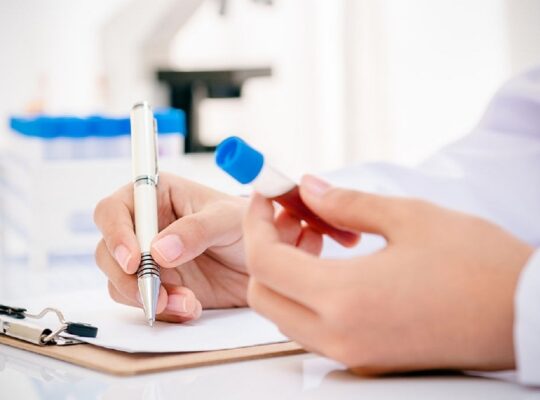Table of Contents
Introduction
SOAP notes are a highly structured format for documenting the progress of a patient during treatment and is only one of many possible formats that could be used by a health professional. They are entered in the patients medical record by healthcare professionals to communicate information to other providers of care, to provide evidence of patient contact and to inform the Clinical Reasoning process.
SOAP is an acronym for:
- Subjective – What the patient says about the problem / intervention.
- Objective – The therapists objective observations and treatment interventions (e.g. ROM, Outcome Measures)
- Assessment – The therapists analysis of the various components of the assessment.
- Plan – How the treatment will be developed to the reach the goals or objectives.
Advantages and Disadvantages
Quinn and Gordon (2003) suggest that the major advantage of the SOAP documentation format is its widespread adoption, leading to general familiarity with the concept within the field of healthcare. It also emphasizes clear and well-organized documentation of findings with a natural progression from the collection of relevant information to the assessment to the plan on how to proceed.
However, the format has also been accused of encouraging documentation that is too concise, overuse of abbreviations and acronyms, and that it is sometimes difficult for non-professionals to decipher. Delitto and Snyder-Mackler (1995) have also suggested that a sequential, rather than an integrative approach to clinical reasoning is encouraged, as there is a tendency by the health professional to merely collect information and not assess it. They feel that the emphasis on the problem-orientated approach to documentation is misplaced and that it is not conducive to clinical decision-making.
One major difficulty with SOAP notes for physiotherapists is the lack of guidance on how to address functional outcomes or goals. Having said that, the format is not so rigid that it cannot be adapted to take this into account.
Writing a SOAP Note
While documentation is a fundamental component of patient care, it is often a neglected one, with therapists reverting to non-specific, overly brief descriptions that are vague to the point of being meaningless. There is no policy that dictates the length and detail of each entry, only that it is dependent on the nature of each specific encounter and that it should contain all the relevant information. However, the American Physical Therapy Association does provide the following guidance on what information should be included:
- Self-report of the patient
- Details of the specific intervention provided
- Equipment used
- Changes in patient status
- Complications or adverse reactions
- Factors that change the intervention
- Progression towards stated goals
- Communication with other providers of care, the patient and their family
Bear in mind that your report will be read at some point by another health professional, either during the current intervention, or in several years time. Therefore, it is your professional responsibility to make sure that it is well-written.[4]
Components of a SOAP Note
Subjective
This component is in a detailed, narrative format and describes the patient’s self-report of their current status in terms of their current condition/complaint, function, activity level, disability, symptoms, social history, family history, employment status, and environmental history. It may also include information from the family or caregivers and if exact phrasing is used, should be enclosed in quotation marks. The patient’s goals and prior response to treatment intervention are also included. Medical information obtained from the patient’s chart can also be included the therapist has not directly observed these findings.
It allows the therapist to document the patient’s perception of their condition as it relates to their progress in rehabilitation, functional performance, or quality of life.
Common errors:
- Passing judgment on a patient e.g. “Patient is over-reacting again”.
- Documenting irrelevant information e.g. patient complaining about previous therapist.
Objective
This section outlines what the therapist observes, tests, and measures. Objective information must be stated in measurable terms. Using measurable terms helps in reassessment after treatment to analyze the progression of the patient and hindering as well as helping factors.
The objective results of the re-assessment help to determine the progress towards functional goals, and the effect of treatment. The therapist should indicate changes in the patient’s status, as well as communication with colleagues, family, or carers.
Common errors:
- Scant detail is provided.
- Global summary of an intervention e.g. “ROM exercises given”.
Assessment
This is potentially the most important legal note because this is the therapist’s professional opinion in light of the subjective and objective findings. It should explain the reasoning behind the decisions taken and clarify and support the analytical thinking behind the problem-solving process. A prioritized problems list is generated with impairments linked to functional limitations. International Classification of Functioning, Disability, and Health (ICF) is very useful to determine and prioritized problem lists and thus helps to make functional physiotherapy diagnoses.
Progress towards the stated goals is indicated, as well as any factors affecting it that may require modification of the frequency, duration or intervention itself. Adverse, as well as positive response, should be documented in re-assessment.
Common errors:
- The assessment is too vague e.g. “Patient is improving”.
- Little insight is provided.
Plan
The final component of the note includes anticipated goals and expected outcomes and outlines the planned interventions to be used. Information should be provided concerning the frequency, specific interventions, treatment progression, equipment required and how it will be used, and education strategies. The plan also documents referrals to other professionals and recommendation s for future interventions or follow-up care. The therapist should report on what the patient’s home exercise programme (HEP) will consist of, as well as the steps to take in order to reach the functional goals. Changes to the intervention strategy are documented in this section.
Common errors:
- The upcoming plan is not indicated.
- Vague description of the plan e.g. “Continue treatment”.
Example of a SOAP Note
Current condition: COPD/pneumonia
Goals 1. Pt. will demonstrate productive cough in seated position, 3/4 trials. 2. Pt. will ambulate 150ft with supervision, no assistive device, on level indoor surfaces.
S: Pt. reports not feeling well today, “I’m very tired”.
O: Auscultation findings: scattered rhonchi all lung fields. Chest PT was performed in sitting (ant. and post.). Techniques included percussion, vibration, and shaking. Pt. performed a weak combined abdominal and upper costal cough that was non-bronchospastic, congested, and non-productive. The cough/huff was performed with VC. Pectoral stretch/thoracic cage mobilizations performed in seated position. Pt. given towel roll placed in back of seat to open up ant. chest wall. Strengthening exercises in standing – pt. performed hip flexion, extension, and abduction; knee flexion 10 reps x 1 set B. Pt. performs HEP with supervision (in evenings with wife). Pt. instructed to hold tissue over trach when speaking to prevent infection and explained importance of drinking enough water.
A: Pt. continues to present with congestion and limitations in coughing productivity. Pt. has been compliant with evening exercise program, which has results in increased tol to therapeutic exercise regime and an increase in LE strength. Amb. not attempted to 20 to pt. report of fatigue. Pt. should be able to tolerate short distance ambulation within the next few days.
P: Cont. current exercise plan including CPT; emphasize productive coughing techniques; increase strengthening exercises reps to 15; attempt amb. again tomorrow.







